From ruddy youth to kingly stature, discover how David's physical traits illuminate his legendary biblical journey.

Physical Description of David in the Bible
Imagine David, the shepherd boy who would be king, as a canvas painted with the vibrant hues of youth and vigor. You've likely heard of his ruddy complexion, a hallmark of health and vitality in the ancient texts, and his eyes, bright and beautiful, that could pierce through the heart of darkness.
Despite his youthful appearance, David's physical stature and strength were significant enough to command attention, even before his legendary encounter with Goliath. As you explore the layers of descriptions, symbolism, and the cultural significance that have colored perceptions of David across centuries, you'll uncover how these traits have shaped not only his story but also the artistic and cultural legacy he inspired.
What might these physical attributes tell us about the man whose life story is larger than life itself?
Key Takeaways
- David's physical appearance, including his ruddy complexion and youthful look, symbolizes health, divine favor, and leadership potential.
- His role as a shepherd and harpist reflect his physical agility and emotional depth, highlighting his preparedness for kingship.
- Physical attributes like bright eyes and stature are framed within divine mission, indicating moral and spiritual qualities.
- Cultural standards of beauty, such as eye attractiveness, are evident in David's description, reflecting societal values and divine approval.
David's Ruddy Complexion

David's ruddy complexion, often interpreted as a sign of health and vitality, plays a significant role in his biblical depiction. This feature isn't merely a physical description; it's laden with complexion symbolism that enriches your understanding of his character and the cultural context of the narrative. In the ancient Near Eastern societies, a vibrant complexion was often seen as a reflection of one's inner strength and divine favor, positioning David favorably in the biblical narrative.
The influence of climate on this aspect of David's description can't be overlooked. Living in a region where outdoor labor under the harsh sun was commonplace, a ruddy complexion could also signify a life of pastoral work. This detail connects David to the land and its people, grounding his story in a tangible reality that you can relate to.
Moreover, this physical trait distinguishes David from his contemporaries and predecessors, setting him apart in a society where physical appearances were seen as manifestations of one's spiritual and moral qualities. It's crucial to recognize how this symbolism is employed to highlight David's suitability as a leader, favored by God for his purity of heart, as much as for his physical attributes.
In analyzing David's ruddy complexion, you're invited to delve deeper into the layers of meaning behind biblical descriptions. Such analysis reveals how physical traits weren't merely incidental but were imbued with significant cultural and theological implications. This understanding allows you to appreciate the complexity and richness of biblical narratives, where every detail serves a purpose in the larger story.
Youthful Appearance

In examining David's youthful appearance, you must consider his ruddy complexion, which signifies health and vitality in biblical descriptions. His role as an athletic shepherd contributes to this portrayal, indicating a robust and agile physical form.
Furthermore, David's iconic depiction as a harpist emphasizes his artistic prowess, complementing his physical attributes with a refinement often associated with youth.
David's Ruddy Complexion
Why does the Bible specifically note David's ruddy complexion, marking him as youthful and vibrant amidst his peers? This description isn't just a casual remark; it carries deep connotations about David's genetics and the historical accuracy of biblical narratives.
Here are three key points to consider:
- Genetic Implications: David's ruddy complexion suggests a genetic predisposition unique to his lineage, implying robust health and vitality.
- Historical Accuracy: Mentioning such specific physical attributes enhances the Bible's credibility as a historical document, providing tangible details for scholars.
- Symbolic Meaning: In ancient texts, a ruddy complexion often symbolizes beauty, youth, and divinely favored status, positioning David as an idealized figure.
Understanding these aspects enriches your appreciation of biblical descriptions, revealing layers of meaning beyond the surface.
Athletic Shepherd Physique
Reflecting on his role as a shepherd, it's clear that the athletic physique attributed to David not only signifies his youthful vigor but also illustrates the physical demands of his pastoral duties. Shepherd skills were paramount in ancient times, requiring agility, strength, and endurance.
David's encounters with wildlife, such as lions and bears, as mentioned in biblical texts, underscore the necessity of a robust and athletic build. These confrontations, integral to his shepherd duties, demanded not only physical prowess but also a strategic mind.
Thus, David's athletic physique isn't merely a testament to his youth but also a reflection of the rigorous lifestyle that honed his physical and mental capabilities, preparing him for future leadership.
Iconic Harpist Portrayal
David's portrayal as an iconic harpist, with a youthful appearance, transcends mere artistic representation, reflecting deep biblical and cultural significance. This image communicates his musical skill and foreshadows his leadership qualities, presenting a multidimensional character early in his life. Understanding this depiction involves examining:
- Musical Skill: David's harp playing isn't just a talent; it's a symbol of divine favor and emotional depth, showcasing his ability to soothe and lead.
- Youthful Appearance: His youthful look emphasizes purity and potential, aligning with the biblical theme of unexpected heroes.
- Leadership Qualities: The harp, a symbol of harmony, prefigures David's unifying role as king, highlighting his capacity to bring people together through both music and governance.
Bright, Beautiful Eyes
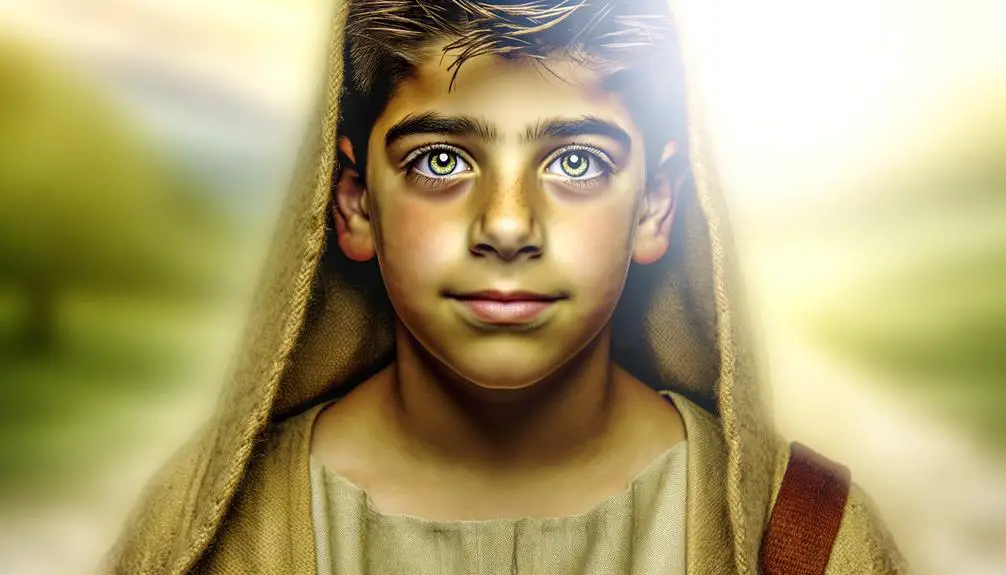
In examining the description of David's 'bright, beautiful eyes' in the biblical texts, you encounter a significant element of his portrayal that transcends mere physical appearance.
The references to his eyes not only serve to highlight his physical attractiveness but also offer insights into his character and the cultural perceptions of beauty during the period.
This analysis allows you to explore the deeper implications of such descriptions within the biblical narrative and their interpretative layers across different cultures and epochs.
Significance of Eye Description
Throughout biblical narratives, the description of bright, beautiful eyes often symbolizes divine favor and insight, suggesting a profound spiritual and moral clarity in the characters thus described. Eye symbolism in biblical texts extends beyond mere physical attributes to encompass visual acuity as a metaphor for discernment and understanding.
Here are three key aspects to consider:
- Eye Symbolism: Represents a deeper, often spiritual, perception or insight.
- Visual Acuity: Implies not just physical sight but an ability to perceive and understand divine truths.
- Divine Favor: Beautiful eyes symbolize not just physical attractiveness but also the grace and favor bestowed by the divine on the individual.
This analysis underscores the multifaceted role of eye descriptions within biblical narratives, emphasizing their symbolic significance beyond mere physical attributes.
Biblical References and Interpretation
Several passages within the Bible illuminate the significance of bright, beautiful eyes as emblems of divine favor and moral clarity, offering a deeper understanding of their role in scriptural narratives. These descriptions not only enrich the textual imagery but also underscore the genealogical background and leadership qualities attributed to pivotal characters.
Aspect |
Significance |
|---|---|
Divine Favor |
Bright eyes as a symbol of God's favor. |
Moral Clarity |
Clear vision associated with righteousness. |
Genealogical Background |
Link to noble lineage through visual traits. |
Leadership Qualities |
Insightful gaze reflecting wisdom and authority. |
Scriptural Narratives |
Enhances understanding of character roles. |
This analytical approach allows one to appreciate the nuanced portrayal of biblical figures, framing their physical attributes in the context of their divine mission and inherent virtues.
Cultural Perceptions of Beauty
Cultures around the world have long considered bright, beautiful eyes as quintessential markers of beauty, reflecting deep-seated values and societal ideals. This fascination isn't just a fad but deeply ingrained in human psychology, influenced by both historical variability and modern standards of attractiveness. Here's how this preference plays out:
- Historical Variability: Across eras, the emphasis on eye beauty has shifted, reflecting societal changes and advancements in cosmetic technology.
- Modern Standards: Today, vibrant eyes are often enhanced through makeup or digital filters, highlighting their continued importance in perceptions of beauty.
- Psychological Impact: Bright eyes are typically associated with health and vitality, traits that are universally appealing, thus reinforcing their desirability across different cultures and time periods.
Physical Stature and Strength

In biblical accounts, David's physical stature and strength, while not described in excessive detail, are nonetheless pivotal to his narrative, underscoring his role as both a warrior and a king. His battle skills and leadership qualities emerge early, notably in the story of David and Goliath, where his ability to slay the giant with a single stone from his sling not only highlights his physical prowess but also his strategic thinking and courage. This episode marks David as a formidable figure, capable of feats beyond the expectation of his youthful appearance.
David's military campaigns further illustrate his physical endurance and tactical intelligence. You observe his growth from a shepherd boy to the commander of Israel's armies, where his physical capabilities are matched by his ability to inspire and lead his men. These narratives serve to solidify his reputation as a leader whose physical strength is augmented by his mental and moral fortitude.
Moreover, David's physicality isn't presented in isolation but is interwoven with his spiritual and emotional depth, creating a multi-dimensional character. His strength doesn't solely derive from his physical abilities but from his faith and reliance on God, which guides his actions throughout his life.
In analyzing David's physical stature and strength, it's evident that these attributes are integral to his identity as both a warrior and a king. They aren't merely physical traits but are emblematic of his broader battle skills, leadership qualities, and his unique position in the biblical narrative as a man after God's own heart.
Grooming and Attire
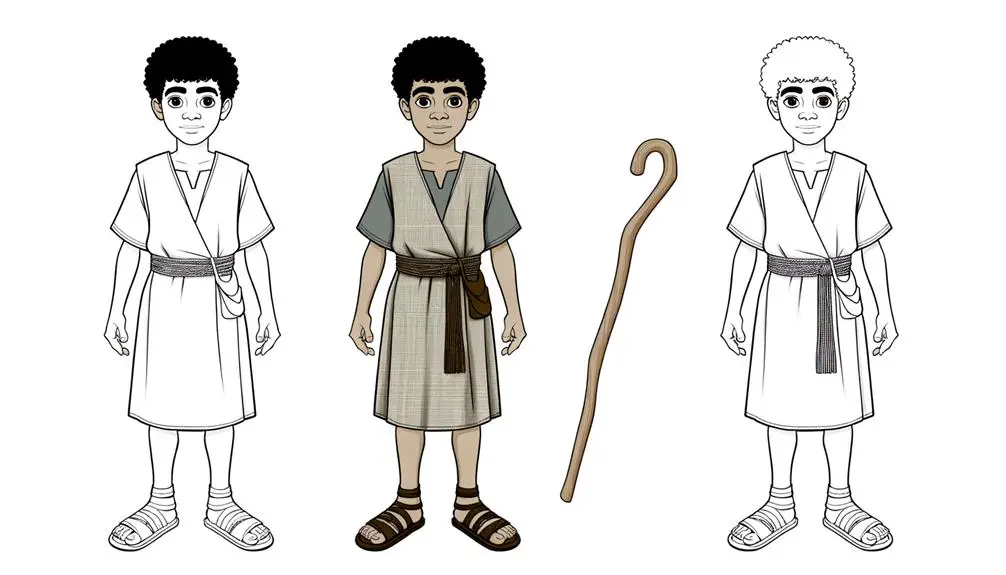
David's grooming and attire, beyond mere personal style, reflected his status, roles, and the cultural norms of his time. The Biblical accounts, while sparse on specific descriptions, suggest that as a young shepherd, he likely wore simple, practical clothing. However, as he rose in stature to become king, his attire and grooming would have mirrored the expectations and fashion of ancient Near Eastern royalty.
Consider the following aspects of David's grooming and attire:
- Hair Styles: The era's cultural norms likely influenced David's hair grooming. While specific hairstyles aren't detailed in the Bible, it's plausible that as a shepherd, David kept his hair in a practical style that didn't interfere with his work. As king, however, he may have adopted more elaborate hairstyles that were symbolic of his royal status and aligned with the styles favored by the elites of his time.
- Clothing Materials: As a shepherd, David's clothing would have been made from simple, durable materials suitable for outdoor work. Wool and linen are mentioned in the Bible as common materials for garments. As king, his wardrobe would have included finer fabrics, possibly including dyed textiles, silk from the East, and embroidered garments, reflecting his elevated status.
- Cultural and Ceremonial Attire: David's role as both a military leader and a religious figure likely influenced his attire during different occasions. Ceremonial robes, possibly adorned with symbols of his royal authority and religious significance, would have been worn during significant religious and state events.
David's grooming and attire weren't mere vanity but were deeply intertwined with his identity, his roles, and the cultural expectations of his time.
Symbolism of Physical Traits
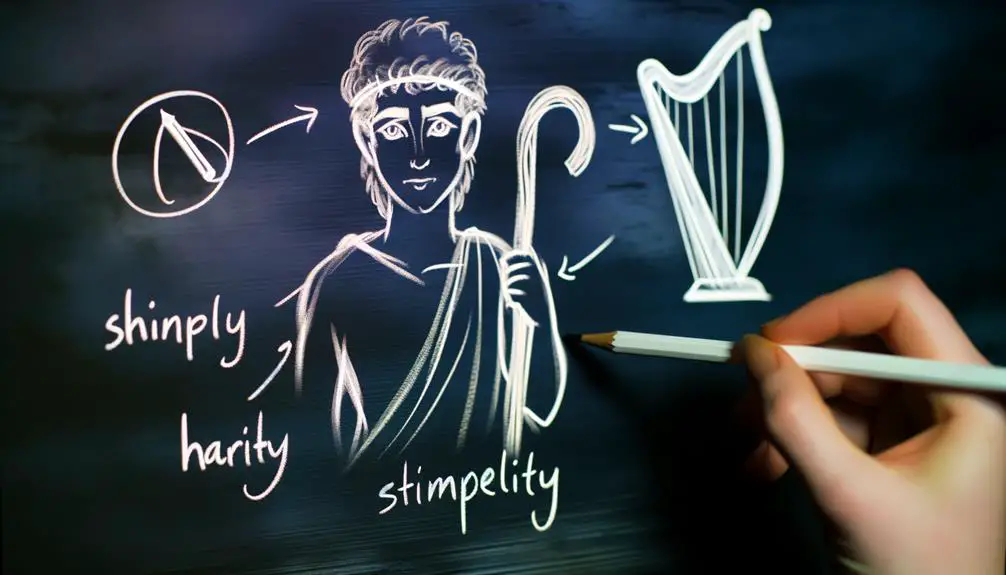
While considering David's grooming and attire highlights his societal roles, examining the symbolism of his physical traits offers deeper insights into his character and the cultural values he embodied. The biblical narrative often uses physical descriptions to symbolize moral, spiritual, and leadership qualities. For instance, David's ruddy complexion and handsome appearance aren't merely aesthetic details; they carry significant genetic implications and health indications, suggesting vitality and favor in a culture that prized physical strength and beauty as reflections of divine blessing.
David's physicality—portrayed as youthful and vigorous—symbolizes his inner qualities such as bravery, purity, and divine selection. These traits were crucial in a leader who was to unite and lead a nation. The emphasis on his attractiveness and physical prowess also reflects societal values that associated such traits with leadership capability and moral righteousness. This association wasn't unique to David but was a common cultural motif, reinforcing the idea that external attributes were indicative of one's suitability for high status and divine favor.
Moreover, David's physical descriptions serve as a narrative tool to contrast him with other characters, such as Saul and Goliath, further emphasizing the symbolic nature of his traits. While Saul's imposing stature initially symbolizes kingly authority, his moral failings lead to a reevaluation of what qualities are truly desirable in a leader. In contrast, David's victory over Goliath, despite his smaller stature, symbolizes divine favor and the triumph of righteousness over brute strength, reinforcing the cultural and genetic implications of his described physical traits.
Artistic Interpretations Through Ages
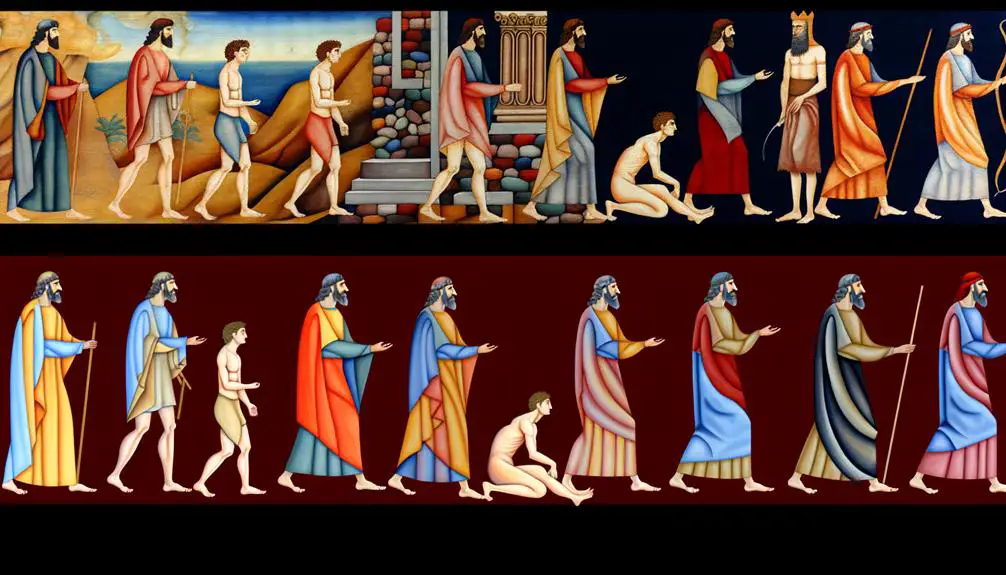
Throughout the ages, artists have continually reinterpreted David's biblical persona, reflecting varying cultural values, artistic movements, and theological perspectives. This evolving artistic exploration has produced a rich tapestry of representations, from Medieval artwork to Renaissance masterpieces, each offering a unique lens through which to view this iconic figure.
Here are three key aspects to consider when examining the artistic interpretations of David through the ages:
- Sculptural Representations: Perhaps the most celebrated sculptures of David come from the Renaissance period, exemplified by Michelangelo's David. This masterpiece not only showcases the artist's unparalleled skill in sculpting the human form but also reflects the Renaissance ideals of humanism and the beauty of the human body. Unlike the often abstract or symbolic depictions found in Medieval artwork, Renaissance sculptures present David in a more lifelike and dynamic form, capturing both his youth and the gravity of his destiny.
- Medieval Artwork: In contrast, Medieval depictions of David often emphasize his spiritual and royal attributes, aligning with the period's theological focus. These representations are frequently found in illuminated manuscripts and stained glass, where David is portrayed as a pious king, often in prayer or playing his harp. The stylized nature of Medieval art, with its lack of concern for naturalistic representation, underscores the symbolic importance of David's character.
- Transition Across Eras: The transition from Medieval to Renaissance interpretations of David highlights a broader shift in artistic and cultural priorities—from the spiritual and communal to the individual and corporeal. This shift not only altered the way David was depicted but also how art was conceived and appreciated.
In analyzing these artistic interpretations, one gains insight into the multifaceted character of David and the complex interplay between art, religion, and culture through the ages.
Cultural Significance of Descriptions
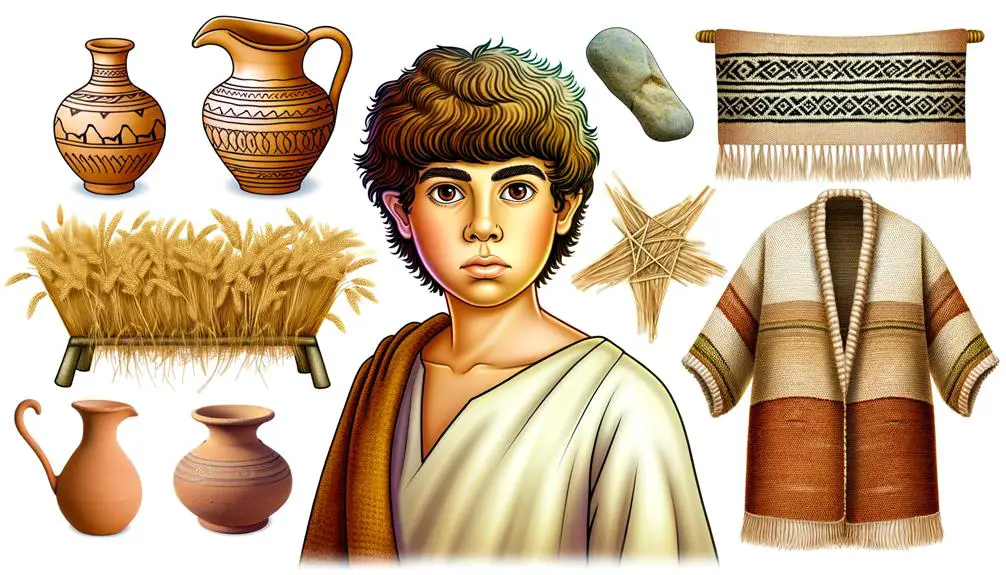
The cultural significance of how David is described in the Bible extends beyond mere narrative detail, shaping perceptions and interpretations across diverse societies and epochs. These descriptions not only serve to construct David's character but also reflect societal values and aspirations. The focus on his physical appearance, coupled with his moral and leadership qualities, bridges the gap between ancient texts and contemporary relevance, offering insights into historical accuracy and the evolution of these narratives in modern contexts.
Aspect |
Impact on Society |
Modern Relevance |
|---|---|---|
Physical Beauty |
Idealized views of leadership |
Challenges in body image perceptions |
Moral Integrity |
Benchmark for ethical leadership |
Inspirational model in leadership ethics |
Heroic Deeds |
Embodiment of heroism and bravery |
Motivates personal and collective courage |
The emphasis on David's youthful beauty and strength, for instance, not only underscores his divine favor but also influences contemporary ideals of beauty and leadership. This intersection between historical accuracy and societal ideals illuminates the dynamic relationship between biblical narratives and their cultural appropriations over time.
Moreover, David's story, rich in moral and ethical dilemmas, resonates with modern audiences, providing a timeless template for leadership that balances human flaws with virtues. This relevance ensures that David's descriptions in the Bible continue to inspire, challenge, and guide individuals and leaders, affirming the enduring impact of these narratives on personal and societal values.
In analyzing the cultural significance of David's descriptions, you're invited to explore how ancient narratives shape modern identities, highlighting the ongoing conversation between past and present, and between divine ideals and human realities.
Frequently Asked Questions
How Did David's Physical Attributes Influence His Relationships With Other Biblical Figures, Such as Saul or Jonathan?
You might wonder how David's characteristics shaped his interactions, especially without diving into his physical traits. His harp skill soothed Saul, fostering an initial bond, while his triumph in the Goliath encounter impressed and eventually threatened Saul.
This valor also endeared him to Jonathan, creating a deep, respectful friendship. Essentially, David's talents and heroic acts, rather than his appearance, fundamentally influenced his relationships with these significant biblical figures.
In What Ways Did David's Physical Prowess Contribute to His Leadership and Kingship Abilities According to the Bible?
David's physical prowess, notably during the Goliath battle, exemplifies his leadership and ability to inspire others. His shepherd skills, such as protection and guidance, directly translated into his kingship qualities.
Are There Any Biblical Accounts That Suggest David's Appearance Affected His Psychological or Emotional State?
You're exploring if David's look influenced his inner feelings or thoughts.
There's no direct biblical evidence linking his appearance to his psychological state.
However, David's humility and musical talents, aspects not directly tied to his physicality, significantly shaped his emotional depth and character.
These qualities allowed him to connect deeply with others and God, suggesting his spiritual and emotional experiences were more profoundly influenced by his personal attributes than his appearance.
How Do Modern Scholars Interpret the Health and Nutrition Aspects of David's Physical Condition Based on Historical and Archaeological Evidence?
You're diving into how scholars analyze King David's health and nutrition from a historical and archaeological standpoint. They sift through dietary laws mentioned in texts and examine archaeological artifacts from his era.
This evidence gives them clues about the food available and the nutritional practices of the time. Their analysis offers insights into how these factors might've influenced David's physical condition, tying together historical dietary habits with the physical demands of his life.
Can David's Physical Description in the Bible Be Linked to Any Specific Genetic or Regional Characteristics of the Population in Ancient Israel?
You're diving into whether David's traits can be tied to specific genetic markers or regional diets of ancient Israel. By analyzing his characteristics, scholars aim to connect dots between his appearance and prevalent features among his contemporaries.
This approach involves a meticulous examination of genetic data and dietary habits, offering insights into how regional and genetic factors might've shaped the physical attributes of people in that era.
Conclusion
In conclusion, David's biblical description paints him not just as your average shepherd boy, but rather as a celestial Adonis, striding through the annals of scripture with the swagger of a divine model. His ruddy complexion, outshining the sun, and eyes so bright they could guide ships home, aren't mere traits but symbols of divine favor.
In essence, every strand of hair, every garment, was a testament to a chosen hero, making even Michelangelo's sculptures seem modest in comparison. Analyzing these descriptions reveals not just a historical figure, but a larger-than-life icon, whose physicality has been etched into the collective cultural memory, transcending mere mortal bounds.


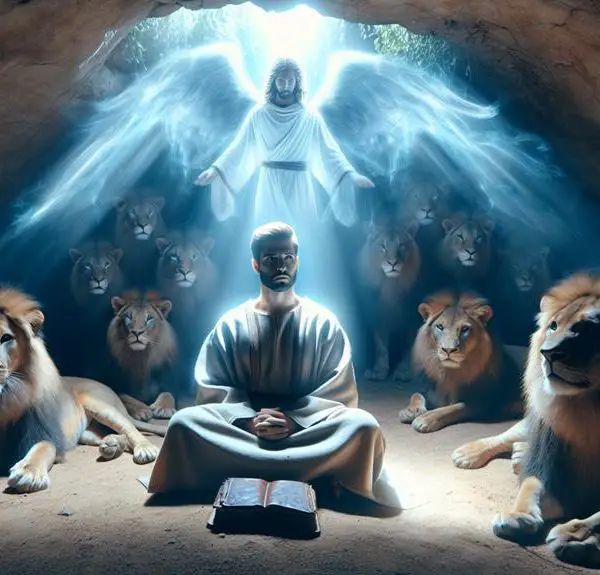
Sign up